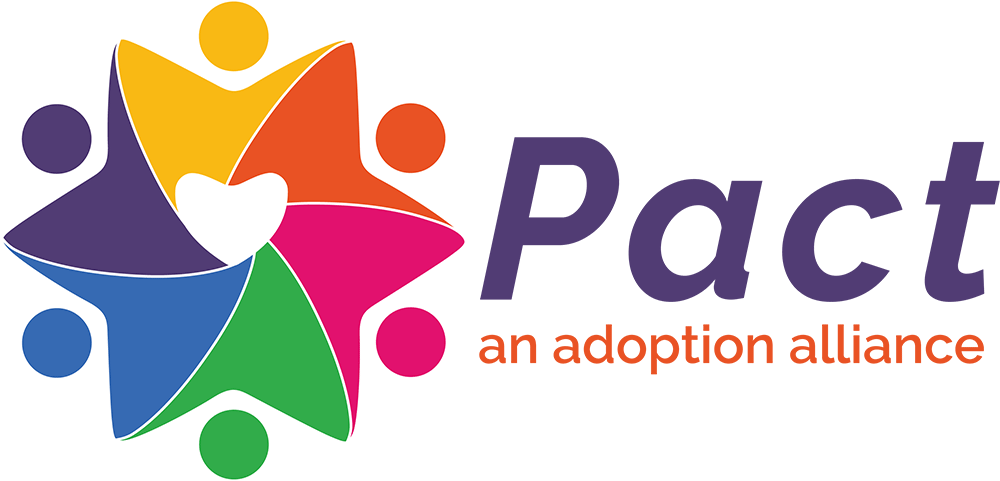Book Review
Making Room in Their Hearts: Keeping Family Ties Through Open Adoption
by Micky Duxbury, MFT
reviewed by Pact Staff
2007
How to negotiate the intricacies of open adoption—the emotional relationship between two families—is often a mystery to the people who are actually involved. Micky Duxbury, a therapist who has been working with families in her practice on open adoption issues for over ten years, has written Making Room in Their Hearts: Keeping Family Ties Through Open Adoption (Routledge, 2006) to offer families some guidance.
In the majority of adoption practices these days, agencies, facilitators and attorneys make clear that open adoption is an option for birth parents, who are often relieved to hear that they won’t lose all contact with their baby, and eager to embrace the possibility of openness. Hesitant adoptive parents, on the other hand, are eager to have a child, but unsure about openness. They sign on to the idea with some trepidation, often feeling that it is something they must come to terms with in order to adopt a child. Adoption professionals often negotiate the tricky middle terrain between these two positions by presenting open adoption as a somewhat sterile and purposefully tidy series of scheduled information exchanges. When they begin the adoption process, adoptive families are informed that they “must” send a certain number of letters and/or photos to the child’s birth family each year with little or no exploration of further contact. Birth parents are counseled that they can “expect” photos and letters at a given time, with no discussion of their reciprocal responsibility towards the child in an open adoption.
In order to write Making Room in Our Hearts, Duxbury interviewed over 150 family members – birth parents, adoptive parents, grandparents and adopted people – who have been involved in open adoption relationships over the years. She also interviewed those adoption professionals who are knowledgeable about openness, and make it a part of their practice to educate parents about open adoption in its full complexity. And she reviewed the existing research (what little there is!) about the effect of open adoption on members of the adoption triad.
The result is an accessible, very readable book that clearly sets out the breadth and depth of the issues that arise between families who are actually living open adoption relationships, and examples of how these families have thought about and worked through those issues. The book discusses the reasons for open adoption; what the fears and concerns are for all parties involved; what issues come up when beginning an open adoption; the basics of how families actually work out things like frequency of visits; openness in foster care adoptions; opening adoptions that started out closed; and working through conflicts and difficulties. Each chapter explores a particular issue through the lens of one family’s story. Each story includes the perspectives of several members of the triad – usually the adoptive parent (or parents), the adopted person, and birth family members.
Using the stories told by families living open adoptions to explore the issues works extremely well. Each chapter includes questions for the reader to consider while reading the family members’ perspectives on the chapter’s topic. The result is that there very little didactic “how to” in the book, and much more guidance by example and reflection. There are some core principles that come through loud and clear, however. The importance of an open adoption being child-centered is paramount. And the crucial role of healthy boundaries among the participants appears again and again in these stories.
The stories also reveal the longevity and continuity, as well as change, in the relationships described. Reading these families’ stories make clear how unrealistic it is to treat open adoption as a structured series of exchanges. Instead, these relationships are as complex, rich, satisfying, frustrating, and deeply necessary as any other lifelong family connections that people build and maintain.
There are some things that could have been done better in the book. It would have been helpful to have more input from birth fathers, for example. Having more racial and ethnic diversity among the families included would be an improvement. And at times it’s a bit difficult to distinguish between the end of the author’s description of a family member, and the beginning of that person’s own story.
On the whole, however, this book is a very welcome addition to the literature on open adoption. It will be useful to families considering open adoption, as well as useful to families in the thick of things. It is a great resource for adoption professionals as well. Highly recommended.
